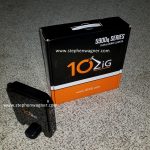Last night I updated my VMware VDI envionrment to VMware Horizon 7.4.0. For the most part the upgrade went smooth, however I discovered an issue (probably unrelated to the upgrade itself, and more so just previously overlooked). When connecting with Google Chrome to VMware Horizon HTML Access via the UAG (Unified Access Gateway), an error pops up after pressing the button saying “Failed to connected to the connection server”.
The Problem:
This error pops up ONLY when using Chrome, and ONLY when connecting through the UAG. If you use a different browser (Firefox, IE), this issue will not occur. If you connect using Chrome to the connection server itself, this issue will not occur. It took me hours to find out what was causing this as virtually nothing popped up when searching for a solution.
Finally I stumbled across a VMware document that mentions on View Connection Server instances and security servers that reside behind a gateway (such as a UAG, or Access Point), the instance must be aware of the address in which browsers will connect to the gateway for HTML access.
The VMware document is here: https://docs.vmware.com/en/VMware-Horizon-7/7.0/com.vmware.horizon-view.installation.doc/GUID-FE26A9DE-E344-42EC-A1EE-E1389299B793.html
To resolve this:
On the view connection server, create a file called “locked.properties” in “install_directory\VMware\VMware View\Server\sslgateway\conf\”.
If you have a single UAG/Access Point, populate this file with:
portalHost=view-gateway.example.com
If you have multiple UAG/Access Points, populate the file with:
portalHost.1=view-gateway-1.example.com
portalHost.2=view-gateway-2.example.com
Restart the server
The issue should now be resolved!
On a side note, I also deleted my VMware Unified Access Gateways VMs and deployed the updated version that ship with Horizon 7.4.0. This means I deployed VMware Unified Access Gateway 3.2.0. There was an issue importing the configuration from the export backup I took from the previous version, so I had to configure from scratch (installing certificates, configuring URLs, etc…), be aware of this issue importing configuration.
